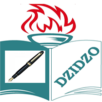Content
Scrum product owners understand the customer and business requirements, then create and manage the product backlog based on those requirements. Since agile teams are, by design, flexible and responsive, it is the responsibility of the product owner to ensure that they are delivering the most value. The business is represented by the product owner who tells the development what is important to deliver.
Collaborative to the core, our platform delivers real-time data that allow scrum teams to comment on tasks during a sprint, share files and much more. Being self-organizing means that they do not work with a project manager. In the Scrum method, team members work as a self-directed group coached by the Scrum Master. But the Scrum dev team is responsible for tracking their tasks, problem-solving, and planning their sprints and approaches to achieve the sprint goals.
It is their meeting to help them, as a group, to inspect and adapt the work they are doing and work in a more effective way. They’re connected to the user needs and focused on telling the story to their team and other executive stakeholders. Good product owners bring clarity about what’s most important to deliver next. Ultimately, they should be the person deciding when something is ready to ship .
If you’re thinking of incorporating the Scrum approach to your team, you should start with simple Scrum boards. These can range from a whiteboard, and sticky notes or online variations and gradually move to more complicated platforms. Since then, scrum has taken on a global role in project management with the first publication of the Scrum Guide in 2010, which has been updated in 2011 and 2013. It is today known as one of the most used agile frameworks in managing projects. Self-organization – Telling a development team they can self-organize does mean that the team will self-organize. In fact, self-organization comes over time and requires help and support.
The product owner should not only understand the customer but also have a vision for the value the scrum team is delivering to the customer. The product owner also balances the needs of other stakeholders in the organization. Self-managed and self-organized team structures allow members to be more creative and innovative.
This approach can help teams deliver high-quality products and services in a fast and efficient manner. Sprint Planning – Once the product backlog is refined, the team will break it down into smaller tasks called sprints to make the project more manageable. The authors borrowed ‘Scrum’ from rugby, where Scrum stands for an ordered formation of players that allows a rugby team to get back from a loss by following a well-thought strategy.
Collaborate With Your Scrum Team
He helps the team analyze situations and recommends ways to go about them most efficiently and effectively. The guiding principle being “self-organizing” goes a long way in making the team responsible towards their goals. They choose what going to be done with in a sprint and how long will be the sprint. He has the most challenging role of wearing multiple hats throughout the product development journey. At the end of the Sprint, the team gets together for an informal session to review the work completed and showcase it to stakeholders. The Product Owner might also rework the Product Backlog based on the current Sprint.
Daily Scrum sessions are held every day to prevent problems piling up in the background. Any questions or concerns should be raised at the daily Scrum meeting. Collaborating with leaders across the organization to ensure their product is able to be sold, implemented, supported, etc.
The Accountabilities of the Product Owner
The fundamental difference between a Scrum Master and a project manager is in their focus. Project managers focus primarily on project outcome, including budget, timeline, resources, and communication between teams. Where a project manager focuses on the project, a Scrum Master focuses on the team, taking steps roles in scrum framework to ensure the team and individual team members achieve success. It follows the structure, three roles, five events, three artifacts. Adhering to this structure is very important, and one cannot overlook any aspect of the structure at all. The 3 roles consist of Product Owner, Scrum Master and Development Team.

It is the client of the project that prioritizes these objectives considering a balance of the value and the cost thereof, that is how the iterations and consequent deliveries are determined. The role of the Scrum Master has a lot of layers and facets to it. Scrum Masters are accountable for helping their teams succeed, and that often means offering them assistance in groups or on a one-on-one basis. They may facilitate exercises, give guidance or help people come to conclusions on their own.
Scrum Methodology: Understanding the Scrum Framework
For a one-month sprint, consider time-boxing your sprint review to a maximum of four hours. At Atlassian, we usually demonstrate the “increment” during the end-of-sprint demo, where the team shows what was completed in the sprint. You may not hear the word “increment” out in the world, as it’s often referred to as the team’s definition of “Done”, a milestone, the sprint goal, or even a full version or a shipped epic.

Frequent reflection points are built into the framework to allow team members to review their progress. Project managers use insights from these review meetings for estimation and future planning. As a result, projects can run more efficiently, within budget, and on schedule. Scrum teams have a lot of meetings—in addition to the regularly scheduled sprint planning and sprint review, Scrum teams also meet daily for a standup. To begin a Scrum sprint, your team lead will identify what work to pull from your product backlog—i.e., work that needs to be done.
What is a Scrum Master?
Email notifications and in-app alerts keep everyone up-to-date instantly. Before defining the framework of scrum, here’s a shortlist of some of the more common terms used when working within a scrum environment. Scrum of Scrums applies to the use of the technique to scale scrum to large groups. Get all our templates, tips, and fresh content so you can run effective, profitable, low-stress projects in your agency or team. The entire team shares equal accountability for the success of the project.
- The concepts of smaller iterations, daily scrum meetings, sprint reviews, and identifying a scrum master could be a challenging cultural shift for a new team.
- He/She has to ensure that the items in the product backlog are altered continually as required to meet the competitive expectations.
- The Scrum master is not the leader or people manager of a Scrum team.
- Sprint – In agile Scrum, a Scrum team will work following iterations or short cycles of up to a calendar month referred to as sprints.
- Once roles have been identified, the Scrum team will hold a series of planning meetings to identify, prioritize, and refine the backlog.
- As such the team includes developers, tester, scrum master, product owner, and other resources such as UX, architect, sales and marketing.
The guide contains the definition of Scrum, describing the Scrum accountabilities, events, artifacts and the guidance that binds them together. You don’t want to get in the way of your self-directed team, but you need to know what they’re doing. Our custom workflows allow you to apply triggers that set actions automatically to free your team to focus on their work. The Scrum team is a small but highly functional team designed to produce incremental deliverables to achieve project objectives.
Daily Scrum Meeting
Within a specific sprint, the sprint backlog lists all the increments of value to be completed. These backlog items are pulled from the product backlog and prioritized in the sprint. It is up to the developers to work together to decide how best to complete the product backlog items. Slowly, with the increase of its potential and popularity, scrum has spread its utility to other sectors like business, IT, and marketing. According to scrum, every project must go on an agile process to move forward with complexity and ambiguity. Even the leadership group of any business organization or enterprise also depends on the scrum’s agile practices.
What makes up the Scrum Framework?
It just depends on how your teams defines “Done” and how you define your sprint goals. For example, some teams choose to release something to their customers at the end of every sprint. Say you work on a server-based product that can only ship to your customers every quarter.
Put simply, agile is the mindset, and Scrum is one of many methodologies that leverage the agile mindset. An overview of how you might go about running your sprint planning meetings. A sprint https://globalcloudteam.com/ in Scrum is a fixed length of time, one month or less where ideas are turned into value. Certain types of Scrum events will take place during specific times in the development process.
The Scrum methodology is an agile project or product delivery technique that helps teams work more efficiently and effectively. It’s a simple, yet powerful approach that can be used for software development, product design, marketing projects, and more. Our multiple project views mean that other departments can collaborate on Gantt charts or our sheet view. But scrum teams will use our scrum board view, which allows them to manage their backlog of user stories and work together when planning a sprint. The scrum master is the role responsible for gluing everything together and ensuring that scrum is being done well. In practical terms, that means they help the product owner define value, the development team deliver the value, and the scrum team to get to get better.
This process repeats at regular intervals, typically 1-4 weeks. Scrum is a framework that consists of values, roles, events and artifacts. These elements work together to provide an agile project management methodology that helps teams manage their work better. It is less a traditional project management methodology and more a framework for product and software development. While the scrum I’m talking about is most frequently used by software development teams, its principles and lessons can be applied to all kinds of teamwork. Often thought of as an agile project management framework, scrum describes a set of meetings, tools, and roles that work in concert to help teams structure and manage their work.


